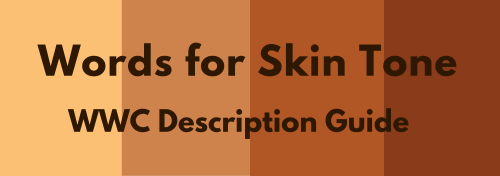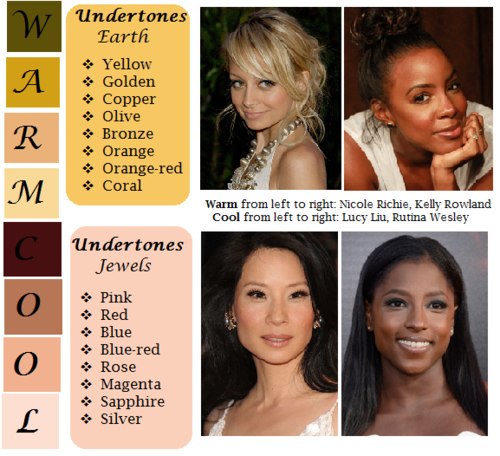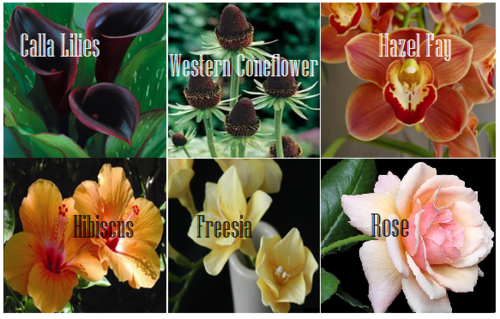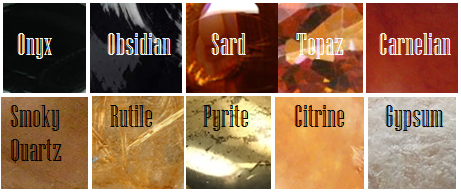STAR WARS: A NEW HOPE (1977)


STAR WARS: A NEW HOPE (1977)
More Posts from Quandrixing and Others













*doom music starts to play* I actually kindof like scheduling these kinds of appointments now...
but seriously Fellas, don't forget to schedule a pap smear every couple of years just in case. If you still have a cervix you can still get cervical cancer. ilu
this has been a psa


Hey, let's talk about anons like this, because I know some people haven't been in a position to see the patterns these play out in on broader scale and may indeed not spot the trap.
And it is a trap.
An ask like this has several purposes.
First, it uses social justice language in passive aggressive and manipulative ways to try to coerce a behavior. In this case, the desired behavior is usually for the recipent to participate in community shunning and/or harrassment. The language above is intended to put the recipient on the defensive where, in the haste to disassociate themself from the Bad Thing, they quickly disassociate themself from the bad person, often with no particular fact checking or evidence.
The message is also intended to create a sense of being surveilled and judged by an unknown amount of people with unknown amount of social power and an unknown amount of relevance to your life.
Notice that these asks are usually framed as if they are coming from a follower or potential follower, someone who is addressing you personally and who cares about your opinion and who your blog has an effect on. However this is usually.... very much not the case. If you've ever had the misfortune to watch a gossip campaign from like this from the outside, you will very quickly notice that messages like this get sent in mass batches to dozens and dozens of strangers. (You can often turn these up with a tumblr search, if you look.)

The sender does not know you and probably does not follow you. They have a person they don't like (possibly for their stated reason and possibly not), and they are going through the reblogs of a post from that blog and mass messaging *everyone* with a form letter. They will not see your response and they will probably never even see your blog again.
Which brings us to the second goal of whisper campaigns like this:
Notice that I blacked out the names above? That's because when the recipient answers anonymous asks like this, they provide a platform for the opinion on their blog. An anonymous message like this that gets posted doesn't just spread gossip and apply pressure to the recipient, it is spread to the recipient's entire community.
The *goal* is to get access to your community. The *goal* is to use you as a soapbox.
Is the information accurate? Did anyone check? Does the anon have an ulterior social motive? BIG SHRUG
If you go into the comments on one of these whisper campaigns you will see that *most people never bother to check.*
They assume good faith from a follower, they're off balance defending themselves, and they jump straight to conciliation.
It's a really, really effective form of social manipulation, and really really commonly misused.

PSA that has been given 100 times already but needs to be said again:
The reason you, gen Z queers, need to be kink positive isn't because you support those kinks. It is okay to be disgusted by them, actually.
The reason you need to support kinksters is because "these kinks are disgusting" is the framework the alt-right is using and will continue to use to outlaw you. They don't think you're any different from the guys at Pride in leather puppy suits. They think your ENTIRE EXISTENCE is sexual. They think you holding hands with someone of the same gender, or existing as a trans person at all, is the same as a straight couple playing tonsil hockey in public.
YOU ARE A FETISH TO THEM. That is all you will ever be to the alt-right. They will never see you as human. When they talk about "our children being exposed to sexual perversion" they don't mean BDSM like you think they do. They mean YOU.
The only way to preserve your own existence is to fight for the right of kink to exist, because the instant kink becomes taboo or outlawed again*, rest assured, the alt-right will become MUCH more transparent about just what they think about your existence.
When you harp on about disgusting kinks and how they need to be hidden or outlawed and how they're harmful and everyone who does them is (insert thing here), you are giving the alt-right the tools they will use to imprison you as soon as they have unchecked power to do so.
THAT is why kinksters have been part of the queer community, part of Pride, from the start. Because the only way to keep our community safe is by truly ensuring everyone has unlimited sexual autonomy so long as the activity is taking place between consenting adults. It's just like how abortion-related laws are the lynchpin for all manner of medical autonomy laws.
The queer community can't stand without kinksters and vice versa. Even if you yourself aren't a kinkster and find them disgusting, like it or not, that is just how it is.
*Sodomy was illegal in Texas until 2003 and the law is still on the books, just not allowed to be enforced thanks to Lawrence v Texas, which SCOTUS has said they have an interest in striking down
Weird question, but in case anyone sees this: how would you recommend getting into baseball, preferably without cable?
I am autistic and most people don’t notice specifically but do notice that I’m very awkward to talk to. I also have no “normal” interests but I need something to be able to make small talk with other parents about at my kid’s events.
I’ve found football and baseball to be very popular here, and of the two, I prefer baseball. I have enjoyed the baseball games I’ve been to in my life.
I am at a loss at where to get started, though. I did buy a book about it, but I’m hopeful a baseball fan will see this and give me some tips.
Words for Skin Tone | How to Describe Skin Color

We discussed the issues describing People of Color by means of food in Part I of this guide, which brought rise to even more questions, mostly along the lines of “So, if food’s not an option, what can I use?” Well, I was just getting to that!
This final portion focuses on describing skin tone, with photo and passage examples provided throughout. I hope to cover everything from the use of straight-forward description to the more creatively-inclined, keeping in mind the questions we’ve received on this topic.
Standard Description
Basic Colors

Pictured above: Black, Brown, Beige, White, Pink.
“She had brown skin.”
This is a perfectly fine description that, while not providing the most detail, works well and will never become cliché.
Describing characters’ skin as simply brown or beige works on its own, though it’s not particularly telling just from the range in brown alone.
Complex Colors
These are more rarely used words that actually “mean” their color. Some of these have multiple meanings, so you’ll want to look into those to determine what other associations a word might have.

Pictured above: Umber, Sepia, Ochre, Russet, Terra-cotta, Gold, Tawny, Taupe, Khaki, Fawn.
Complex colors work well alone, though often pair well with a basic color in regards to narrowing down shade/tone.
For example: Golden brown, russet brown, tawny beige…
As some of these are on the “rare” side, sliding in a definition of the word within the sentence itself may help readers who are unfamiliar with the term visualize the color without seeking a dictionary.
“He was tall and slim, his skin a russet, reddish-brown.”
Comparisons to familiar colors or visuals are also helpful:
“His skin was an ochre color, much like the mellow-brown light that bathed the forest.”
Modifiers
Modifiers, often adjectives, make partial changes to a word.The following words are descriptors in reference to skin tone.
Dark - Deep - Rich - Cool
Warm - Medium - Tan
Fair - Light - Pale
Rich Black, Dark brown, Warm beige, Pale pink…
If you’re looking to get more specific than “brown,” modifiers narrow down shade further.
Keep in mind that these modifiers are not exactly colors.
As an already brown-skinned person, I get tan from a lot of sun and resultingly become a darker, deeper brown. I turn a pale, more yellow-brown in the winter.
While best used in combination with a color, I suppose words like “tan” “fair” and “light” do work alone; just note that tan is less likely to be taken for “naturally tan” and much more likely a tanned White person.
Calling someone “dark” as description on its own is offensive to some and also ambiguous. (See: Describing Skin as Dark)
Undertones
Undertones are the colors beneath the skin, seeing as skin isn’t just one even color but has more subdued tones within the dominating palette.

pictured above: warm / earth undertones: yellow, golden, copper, olive, bronze, orange, orange-red, coral | cool / jewel undertones: pink, red, blue, blue-red, rose, magenta, sapphire, silver.
Mentioning the undertones within a character’s skin is an even more precise way to denote skin tone.
As shown, there’s a difference between say, brown skin with warm orange-red undertones (Kelly Rowland) and brown skin with cool, jewel undertones (Rutina Wesley).
“A dazzling smile revealed the bronze glow at her cheeks.”
“He always looked as if he’d ran a mile, a constant tinge of pink under his tawny skin.”
Standard Description Passage
“Farah’s skin, always fawn, had burned and freckled under the summer’s sun. Even at the cusp of autumn, an uneven tan clung to her skin like burrs. So unlike the smooth, red-brown ochre of her mother, which the sun had richened to a blessing.”
-From my story “Where Summer Ends” featured in Strange Little Girls
Here the state of skin also gives insight on character.
Note my use of “fawn” in regards to multiple meaning and association. While fawn is a color, it’s also a small, timid deer, which describes this very traumatized character of mine perfectly.
Though I use standard descriptions of skin tone more in my writing, at the same time I’m no stranger to creative descriptions, and do enjoy the occasional artsy detail of a character.
Creative Description
Whether compared to night-cast rivers or day’s first light…I actually enjoy seeing Characters of Colors dressed in artful detail.
I’ve read loads of descriptions in my day of white characters and their “smooth rose-tinged ivory skin”, while the PoC, if there, are reduced to something from a candy bowl or a Starbucks drink, so to actually read of PoC described in lavish detail can be somewhat of a treat.
Still, be mindful when you get creative with your character descriptions. Too many frills can become purple-prose-like, so do what feels right for your writing when and where. Not every character or scene warrants a creative description, either. Especially if they’re not even a secondary character.
Using a combination of color descriptions from standard to creative is probably a better method than straight creative. But again, do what’s good for your tale.
Natural Settings - Sky

Pictured above: Harvest Moon -Twilight, Fall/Autumn Leaves, Clay, Desert/Sahara, Sunlight - Sunrise - Sunset - Afterglow - Dawn- Day- Daybreak, Field - Prairie - Wheat, Mountain/Cliff, Beach/Sand/Straw/Hay.
Now before you run off to compare your heroine’s skin to the harvest moon or a cliff side, think about the associations to your words.
When I think cliff, I think of jagged, perilous, rough. I hear sand and picture grainy, yet smooth. Calm. mellow.
So consider your character and what you see fit to compare them to.
Also consider whose perspective you’re describing them from. Someone describing a person they revere or admire may have a more pleasant, loftier description than someone who can’t stand the person.
“Her face was like the fire-gold glow of dawn, lifting my gaze, drawing me in.”
“She had a sandy complexion, smooth and tawny.”
Even creative descriptions tend to draw help from your standard words.
Flowers

Pictured above: Calla lilies, Western Coneflower, Hazel Fay, Hibiscus, Freesia, Rose
It was a bit difficult to find flowers to my liking that didn’t have a 20 character name or wasn’t called something like “chocolate silk” so these are the finalists.
You’ll definitely want to avoid purple-prose here.
Also be aware of flowers that most might’ve never heard of. Roses are easy, as most know the look and coloring(s) of this plant. But Western coneflowers? Calla lilies? Maybe not so much.
“He entered the cottage in a huff, cheeks a blushing brown like the flowers Nana planted right under my window. Hazel Fay she called them, was it?”
Assorted Plants & Nature

Pictured above: Cattails, Seashell, Driftwood, Pinecone, Acorn, Amber
These ones are kinda odd. Perhaps because I’ve never seen these in comparison to skin tone, With the exception of amber.
At least they’re common enough that most may have an idea what you’re talking about at the mention of “pinecone.“
I suggest reading out your sentences aloud to get a better feel of how it’ll sounds.
"Auburn hair swept past pointed ears, set around a face like an acorn both in shape and shade.”
I pictured some tree-dwelling being or person from a fantasy world in this example, which makes the comparison more appropriate.
I don’t suggest using a comparison just “cuz you can” but actually being thoughtful about what you’re comparing your character to and how it applies to your character and/or setting.
Wood

Pictured above: Mahogany, Walnut, Chestnut, Golden Oak, Ash
Wood can be an iffy description for skin tone. Not only due to several of them having “foody” terminology within their names, but again, associations.
Some people would prefer not to compare/be compared to wood at all, so get opinions, try it aloud, and make sure it’s appropriate to the character if you do use it.
“The old warlock’s skin was a deep shade of mahogany, his stare serious and firm as it held mine.”
Metals

Pictured above: Platinum, Copper, Brass, Gold, Bronze
Copper skin, brass-colored skin, golden skin…
I’ve even heard variations of these used before by comparison to an object of the same properties/coloring, such as penny for copper.
These also work well with modifiers.
“The dress of fine white silks popped against the deep bronze of her skin.”
Gemstones - Minerals

Pictured above: Onyx, Obsidian, Sard, Topaz, Carnelian, Smoky Quartz, Rutile, Pyrite, Citrine, Gypsum
These are trickier to use. As with some complex colors, the writer will have to get us to understand what most of these look like.
If you use these, or any more rare description, consider if it actually “fits” the book or scene.
Even if you’re able to get us to picture what “rutile” looks like, why are you using this description as opposed to something else? Have that answer for yourself.
“His skin reminded her of the topaz ring her father wore at his finger, a gleaming stone of brown, mellow facades.”
Physical Description
Physical character description can be more than skin tone.
Show us hair, eyes, noses, mouth, hands…body posture, body shape, skin texture… though not necessarily all of those nor at once.
Describing features also helps indicate race, especially if your character has some traits common within the race they are, such as afro hair to a Black character.
How comprehensive you decide to get is up to you. I wouldn’t overdo it and get specific to every mole and birthmark. Noting defining characteristics is good, though, like slightly spaced front teeth, curls that stay flopping in their face, hands freckled with sunspots…
General Tips
Indicate Race Early: I suggest indicators of race be made at the earliest convenience within the writing, with more hints threaded throughout here and there.
Get Creative On Your Own: Obviously, I couldn’t cover every proper color or comparison in which has been “approved” to use for your characters’ skin color, so it’s up to you to use discretion when seeking other ways and shades to describe skin tone.
Skin Color May Not Be Enough: Describing skin tone isn’t always enough to indicate someone’s ethnicity. As timeless cases with readers equating brown to “dark white” or something, more indicators of race may be needed.
Describe White characters and PoC Alike: You should describe the race and/or skin tone of your white characters just as you do your Characters of Color. If you don’t, you risk implying that White is the default human being and PoC are the “Other”).
PSA: Don’t use “Colored.” Based on some asks we’ve received using this word, I’d like to say that unless you or your character is a racist grandmama from the 1960s, do not call People of Color “colored” please.
Not Sure Where to Start? You really can’t go wrong using basic colors for your skin descriptions. It’s actually what many people prefer and works best for most writing. Personally, I tend to describe my characters using a combo of basic colors + modifiers, with mentions of undertones at times. I do like to veer into more creative descriptions on occasion.
Want some alternatives to “skin” or “skin color”? Try: Appearance, blend, blush, cast, coloring, complexion, flush, glow, hue, overtone, palette, pigmentation, rinse, shade, sheen, spectrum, tinge, tint, tone, undertone, value, wash.
Skin Tone Resources
List of Color Names
The Color Thesaurus
Skin Undertone & Color Matching
Tips and Words on Describing Skin
Photos: Undertones Described (Modifiers included)
Online Thesaurus (try colors, such as “red” & “brown”)
Don’t Call me Pastries: Creative Skin Tones w/ pics I
Writing & Description Guides
WWC Featured Description Posts
WWC Guide: Words to Describe Hair
Writing with Color: Description & Skin Color Tags
7 Offensive Mistakes Well-intentioned Writers Make
I tried to be as comprehensive as possible with this guide, but if you have a question regarding describing skin color that hasn’t been answered within part I or II of this guide, or have more questions after reading this post, feel free to ask!
~ Mod Colette



got an ask recently about the way my digital art looks like traditional, so I tried to explain the steps on my self portrait, feat. some of my favorite artists and favorite brushes. sorry if it's incoherent, I'm not used to explaining my process besides "I've been professionally studying traditional art for half my life and I'm really bad at technology so I just paint digitally the way I do on paper"
Who's your fave non-mage character in DA?

for a character that I like so much I really don’t draw him enough.
stories of platonic love are important to me, and I tend to relate to them more than I would to any kind of romantic relationship… and Varric’s and Hawke’s friendship just. it gets me. it gets me real bad

in absolute tears about the pride module at my work
It’s October! You know what that means... 🎃 (via kxvo)
-
 pugglers liked this · 2 weeks ago
pugglers liked this · 2 weeks ago -
 nburbsbibear liked this · 2 weeks ago
nburbsbibear liked this · 2 weeks ago -
 alfhildr-the-word-weaver liked this · 2 weeks ago
alfhildr-the-word-weaver liked this · 2 weeks ago -
 stolen-glass-bottle liked this · 2 weeks ago
stolen-glass-bottle liked this · 2 weeks ago -
 remboistomska liked this · 2 weeks ago
remboistomska liked this · 2 weeks ago -
 wizard-kinz liked this · 2 weeks ago
wizard-kinz liked this · 2 weeks ago -
 sweetlittledudes liked this · 2 weeks ago
sweetlittledudes liked this · 2 weeks ago -
 battysorciere liked this · 2 weeks ago
battysorciere liked this · 2 weeks ago -
 alderaansleiaa reblogged this · 2 weeks ago
alderaansleiaa reblogged this · 2 weeks ago -
 samuel-is-an-idiot liked this · 2 weeks ago
samuel-is-an-idiot liked this · 2 weeks ago -
 pibsy12 liked this · 2 weeks ago
pibsy12 liked this · 2 weeks ago -
 killthehippo-stealtheboat reblogged this · 2 weeks ago
killthehippo-stealtheboat reblogged this · 2 weeks ago -
 staticspxcelover reblogged this · 2 weeks ago
staticspxcelover reblogged this · 2 weeks ago -
 bemybitxh69 liked this · 2 weeks ago
bemybitxh69 liked this · 2 weeks ago -
 staticspxcelover liked this · 2 weeks ago
staticspxcelover liked this · 2 weeks ago -
 k00320717 liked this · 2 weeks ago
k00320717 liked this · 2 weeks ago -
 sirericcantona liked this · 2 weeks ago
sirericcantona liked this · 2 weeks ago -
 neuvirtualoasis reblogged this · 2 weeks ago
neuvirtualoasis reblogged this · 2 weeks ago -
 zeppe1in007 liked this · 2 weeks ago
zeppe1in007 liked this · 2 weeks ago -
 roachseed liked this · 2 weeks ago
roachseed liked this · 2 weeks ago -
 icecreamdilemma reblogged this · 3 weeks ago
icecreamdilemma reblogged this · 3 weeks ago -
 123zerg321 liked this · 3 weeks ago
123zerg321 liked this · 3 weeks ago -
 kasusiko liked this · 3 weeks ago
kasusiko liked this · 3 weeks ago -
 mordredsheart reblogged this · 3 weeks ago
mordredsheart reblogged this · 3 weeks ago -
 pazam50 liked this · 3 weeks ago
pazam50 liked this · 3 weeks ago -
 sirblazebot reblogged this · 3 weeks ago
sirblazebot reblogged this · 3 weeks ago -
 perfectmanisperfect reblogged this · 3 weeks ago
perfectmanisperfect reblogged this · 3 weeks ago -
 perfectmanisperfect liked this · 3 weeks ago
perfectmanisperfect liked this · 3 weeks ago -
 happysmilebtr reblogged this · 3 weeks ago
happysmilebtr reblogged this · 3 weeks ago -
 masterofmaagnetism reblogged this · 3 weeks ago
masterofmaagnetism reblogged this · 3 weeks ago -
 masterofmaagnetism liked this · 3 weeks ago
masterofmaagnetism liked this · 3 weeks ago -
 monsolei-90 liked this · 3 weeks ago
monsolei-90 liked this · 3 weeks ago -
 operattic reblogged this · 3 weeks ago
operattic reblogged this · 3 weeks ago -
 4sabers liked this · 3 weeks ago
4sabers liked this · 3 weeks ago -
 wcinmorll liked this · 3 weeks ago
wcinmorll liked this · 3 weeks ago -
 rakowsola liked this · 3 weeks ago
rakowsola liked this · 3 weeks ago -
 c4rb0n-c0pi3s liked this · 3 weeks ago
c4rb0n-c0pi3s liked this · 3 weeks ago -
 scythekind26 liked this · 3 weeks ago
scythekind26 liked this · 3 weeks ago -
 reapreyes reblogged this · 3 weeks ago
reapreyes reblogged this · 3 weeks ago -
 cuckingforchrist reblogged this · 3 weeks ago
cuckingforchrist reblogged this · 3 weeks ago -
 butterflyrita-16 liked this · 3 weeks ago
butterflyrita-16 liked this · 3 weeks ago -
 twic0rd liked this · 3 weeks ago
twic0rd liked this · 3 weeks ago -
 selph reblogged this · 3 weeks ago
selph reblogged this · 3 weeks ago -
 vault21 reblogged this · 3 weeks ago
vault21 reblogged this · 3 weeks ago -
 thelvss reblogged this · 3 weeks ago
thelvss reblogged this · 3 weeks ago -
 thelvss liked this · 3 weeks ago
thelvss liked this · 3 weeks ago -
 kelp-person liked this · 3 weeks ago
kelp-person liked this · 3 weeks ago -
 insearchofblueroses liked this · 3 weeks ago
insearchofblueroses liked this · 3 weeks ago -
 marastarfar liked this · 3 weeks ago
marastarfar liked this · 3 weeks ago
